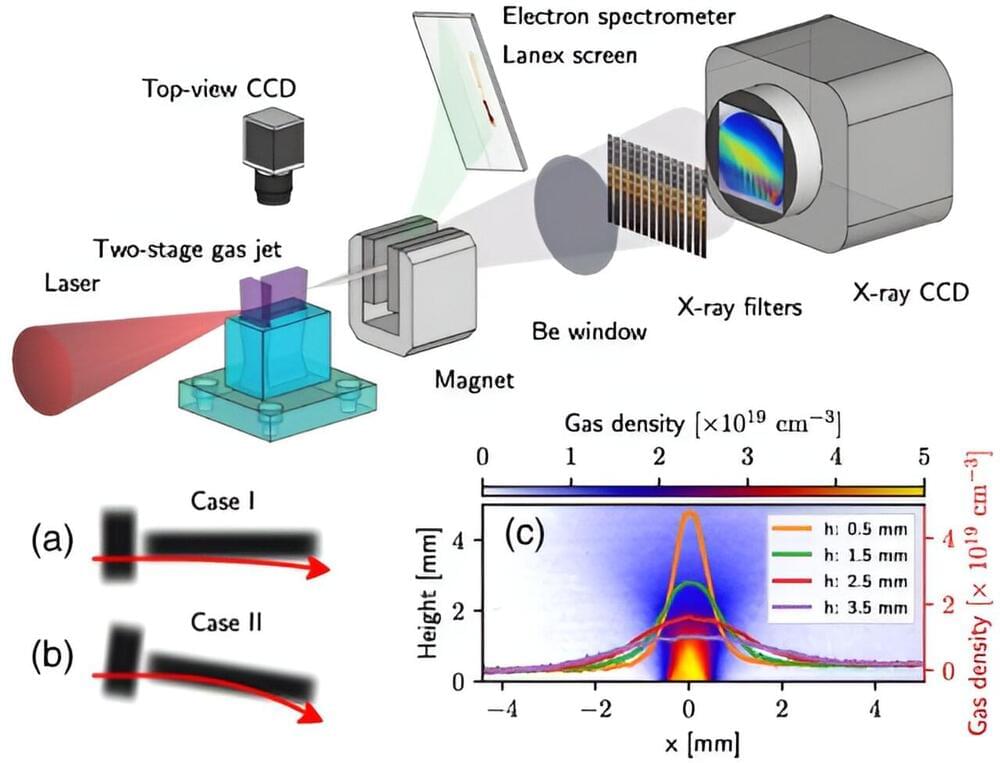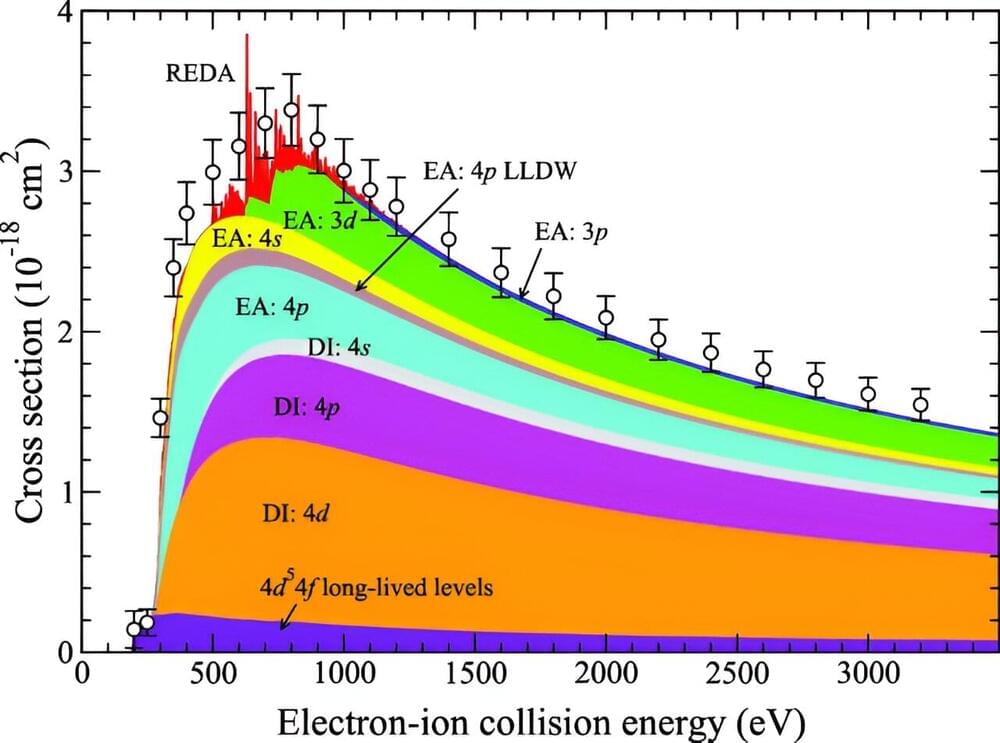Jun 27, 2024
Researchers capture detailed picture of electron acceleration in one shot
Posted by Saúl Morales Rodriguéz in categories: biotech/medical, quantum physics
Adjusting experimental methods achieved the first “single-shot” diagnosis of electron acceleration through a laser wakefield accelerator along a curved trajectory, according to a recent study led by University of Michigan researchers. The findings are published in the journal Physical Review Letters.
This optical-based technique could help engineers develop more powerful electron accelerators for fundamental studies of quantum and particle physics —or more compact accelerators for use in medicine and industry.
Compared to traditional accelerators which can be kilometers long, laser wakefield accelerators can apply 1,000 times more energy per meter, allowing a vastly more compact design able to fit into a large room.


















